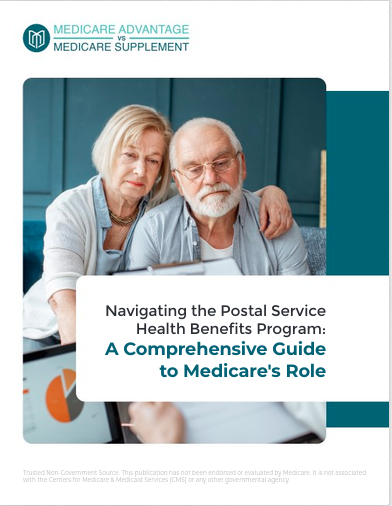Key Takeaways:
- Your income significantly impacts your Medicare premiums and out-of-pocket costs.
- Understanding how income adjustments affect Medicare can help you better plan your healthcare finances.
How Your Income Affects Medicare Premiums and Out-of-Pocket Costs
In 2024, understanding how your income influences your Medicare premiums and out-of-pocket costs is essential for effective financial planning. The adjustments based on income can lead to higher premiums and additional charges, affecting both Medicare Part B and Part D. This guide will provide a comprehensive look at how income impacts these costs and what to expect.
Understanding Income-Related Medicare Premium Adjustments
Medicare premiums are partly determined by your income, particularly for Medicare Part B and Part D. The Social Security Administration (SSA) uses your income from two years prior to calculate these adjustments. This means your 2024 premiums are based on your 2022 tax returns.
Medicare Part B:
The standard monthly premium for Medicare Part B in 2024 is $174.70. However, higher-income beneficiaries pay more, with the additional amounts known as Income-Related Monthly Adjustment Amounts (IRMAA). Here’s the breakdown:
- Income up to $103,000 (individual) / $206,000 (joint): $174.70
- Income $103,001 – $129,000 / $206,001 – $258,000: $244.60
- Income $129,001 – $161,000 / $258,001 – $322,000: $349.40
- Income $161,001 – $193,000 / $322,001 – $386,000: $454.20
- Income $193,001 – $500,000 / $386,001 – $750,000: $559.00
- Income above $500,000 / $750,000: $594.00
Medicare Part D:
Medicare Part D covers prescription drugs, and premiums also vary by income. The standard premium is approximately $55.50 per month in 2024. However, higher-income beneficiaries will pay more due to IRMAA:
- Income up to $103,000 (individual) / $206,000 (joint): Standard premium
- Income $103,001 – $129,000 / $206,001 – $258,000: Standard premium + $12.90
- Income $129,001 – $161,000 / $258,001 – $322,000: Standard premium + $33.30
- Income $161,001 – $193,000 / $322,001 – $386,000: Standard premium + $53.80
- Income $193,001 – $500,000 / $386,001 – $750,000: Standard premium + $74.20
- Income above $500,000 / $750,000: Standard premium + $81.00
The Income Brackets for Medicare Premiums and Costs
The IRMAA brackets are crucial as they determine how much extra you pay on top of the standard Medicare premiums. Understanding these brackets can help you anticipate your costs and plan your finances.
For both Part B and Part D, the brackets are as follows:
- Less than or equal to $103,000 (individual) / $206,000 (joint): No additional IRMAA
- $103,001 – $129,000 / $206,001 – $258,000: Moderate IRMAA
- $129,001 – $161,000 / $258,001 – $322,000: Higher IRMAA
- $161,001 – $193,000 / $322,001 – $386,000: Significant IRMAA
- $193,001 – $500,000 / $386,001 – $750,000: Maximum IRMAA
- More than $500,000 / $750,000: Highest IRMAA
These brackets apply to income reported on your tax returns from two years prior, so it’s essential to consider any significant changes in your income when planning your healthcare costs.
How Income Levels Influence Medicare Part B and D Premiums
Income adjustments can lead to substantial increases in your Medicare costs. For high-income beneficiaries, these surcharges can add hundreds of dollars to monthly premiums. Here’s how these adjustments specifically affect Medicare Part B and D:
Medicare Part B:
- Standard Premium: $174.70 per month
- IRMAA Adjustments: Increase the premium to as high as $594.00 per month, depending on your income bracket.
Medicare Part D:
- Standard Premium: Around $55.50 per month
- IRMAA Adjustments: Can add up to $81.00 to the monthly premium, depending on income.
These increases underscore the importance of understanding how your income affects your Medicare premiums and preparing for potential surcharges.
The Impact of Income on Medicare Out-of-Pocket Expenses
Beyond premiums, your income also influences other out-of-pocket costs associated with Medicare. Here’s a closer look at how income affects various Medicare expenses:
Deductibles and Coinsurance:
- Medicare Part B Deductible: $240 annually
- Coinsurance: After meeting the deductible, you generally pay 20% of the Medicare-approved amount for services.
Out-of-Pocket Maximums for Medicare Advantage Plans:
Medicare Advantage plans have out-of-pocket maximums to protect beneficiaries from high medical costs. For 2024, these maximums are:
- In-network services: Up to $8,850
- Combined in-network and out-of-network services: Up to $13,300
These caps can vary by plan and provider, so it’s crucial to review your specific plan details.
Prescription Drug Costs (Part D):
In 2024, the Part D coverage gap (also known as the “donut hole”) starts after you and your plan have spent $5,030 on covered drugs. In the coverage gap, you pay up to 25% of the cost of your drugs until your out-of-pocket costs reach $8,000. After this threshold, you enter the catastrophic coverage phase, where you pay significantly less for covered drugs.
Conclusion: Planning for Medicare Costs
Understanding how your income affects Medicare premiums and out-of-pocket costs is essential for managing your healthcare expenses. By being aware of the IRMAA adjustments and how they apply to Medicare Part B and Part D, you can better plan your finances and avoid unexpected costs. Always review your income and Medicare plans annually to ensure you are making the best financial decisions for your healthcare needs.
Contact Information:
Email: [email protected]
Phone: 8595550123










